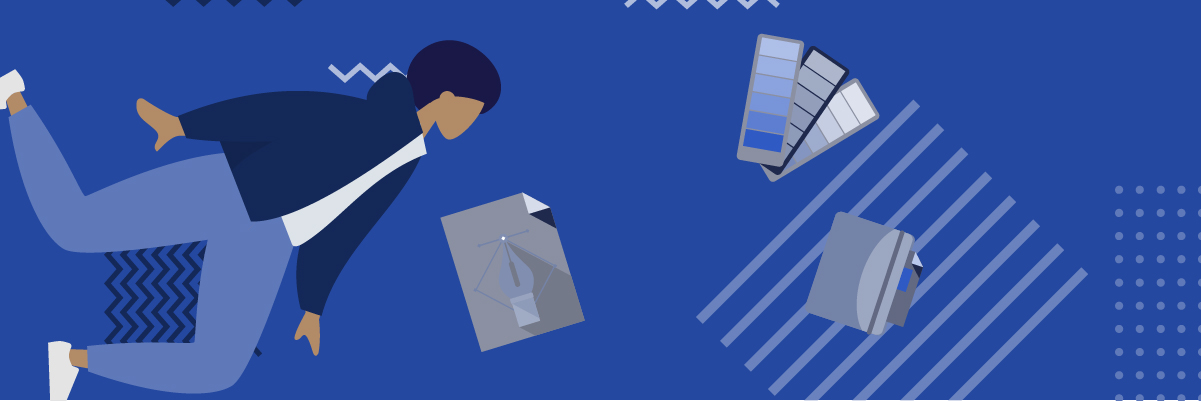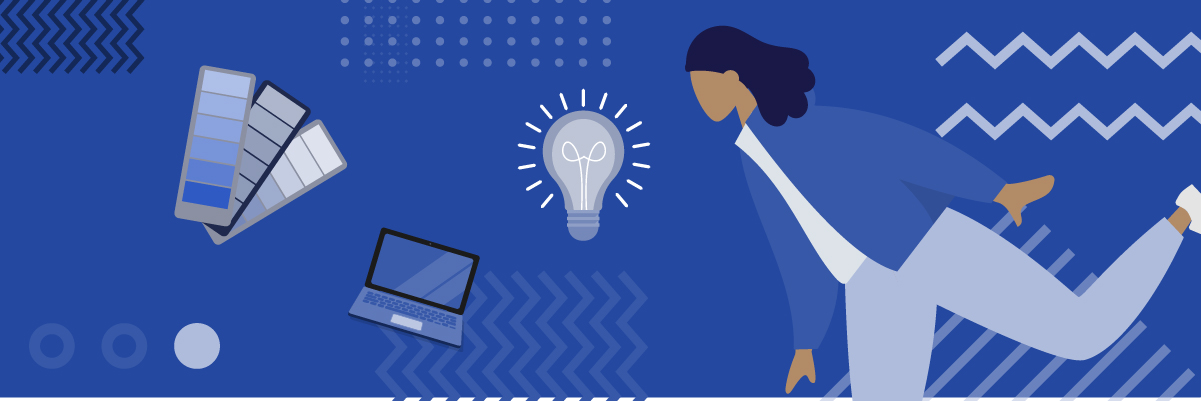One of the principal brain rules is that people will remember 65% of the information in images instead of only 10% when you use words. To help you capture attention and beat your competition while at it, you have to hire the best graphic designers to develop viral content. Graphic designers help you to create memorable posters and branding materials that communicate effectively with your target audience.
Career Explorer predicts that the significance for graphic design services will expand by 4% in the next five years. Such a growth rate is quite impressive: it can result in the addition of tens of thousands of technicians alongside new talents into the market.
So, what do graphic designers do? And what does it take to become the top graphic designer? Further, how much should you expect to earn and also grow your salary?
Let’s dig into the discussion in search of answers.
What Do Graphic Designers Do?
At a basic level, a graphic designer creates visual concepts to communicate ideas. The images are meant to inspire, capture the attention of customers, or inform the readers.
Previously, graphic designers developed their concepts manually. Today, graphic designers use computer software because it is faster and offers greater precision.
However, you will still find a few designers who work manually at the conception stage before transferring the software’s ideas. Some of the projects are better executed using a combination of manual scripting and software.
Upon completion, the concepts or graphics are practical in reports, brochures, magazines, and advertisements, among other publications.
While designing is the core business for these graphics technicians, there are other duties they can perform as well.

What Else Do Graphic Designers Do?
- Discuss project ideas with art directors or clients. The discussion helps both parties to establish the scope of a project.
- Create designs using a photo, digital, and layout software.
- Develop illustrations, logos, and original images that can communicate on behalf of clients or brands.
- Choose colors, typefaces, and images that will suit a project.
- Edit or revise designs upon discussion with the client.
- Approve the final designs and supervise printing or execution to ensure that the process achieves the original goals.
But there is more to graphic design.
Designers work on projects beyond those meant for printing and publication. They design the graphics used on websites to achieve consistent branding online and offline. Such a project would require different software and design skills to produce identical results but on another platform.
Graphic Designers and Fonts
In other quarters, graphic designers are called communication artists. The designer has to provide a comprehensive view of a project beyond images. One of the most common ingredients for graphic design is the FONT. Whether it is a movie subtitle font or a poster, the designer must find a font that works.
As a graphic designer, you have to choose a font that matches the message on your project, brand expectations, and audience’s taste, among other factors.
Think of the role of font colors, size, positioning, and length, among other aspects, in the overall aesthetics of a poster. These aspects define the general character of a headline, a poster, a publication title, and how the target audience receives the message.
Because graphic designers play a crucial role in branding, they collaborate with the marketing team, PR, advertisement, and promotions when designing materials.
The designer plays the lead role in developing captivating designs that will make the product competitive when placed on the shelf.
Work Environment for Graphic Designers
Imagine designing a poster or packaging material for use across the world. You need a quiet place where you can focus on the idea and develop the best concepts. That’s why graphic designers work from studios.
The studio allows you to simulate, print, test, and edit the project on the go. Such studios usually have drafting tables, computers, iPads, and the software you need.
Graphic design projects also involve a lot of collaboration. Naturally, you will rarely have a singular run at a visual design project. You’ll have to work with colleagues, a project team, or clients. It is this teamwork that produces acceptable results.
Employment Opportunities for Graphic Designers
You’ll mostly apply graphic design skills on a project-by-project basis. It explains why many companies do not have in-house graphic designers. As a result, many designers work as freelancers or in agencies.
Still, some industries employ graphic designers in the following percentages:
- 21% of graphic designers are self-employed
- 10% offer specialized graphic design services. Their services target a specific market like web design, book illustrations, office branding, etc.
- 8% are into advertising, public relations, and such related services
- 7% work in the printing industry
- 5% offer their services to newspapers, directory publishers, books, and periodicals.
The remaining technicians usually work as freelance graphic designers or remain obscured in the market.
Nevertheless, it isn’t easy to define a singular work schedule or routine for all graphic designers because of the diversified work environment. Most of the work is on a project basis, resulting in moments of intense pressure as the team works towards a deadline.
For entrepreneurs and the self-employed, some of the time will go into marketing as you look for new projects or discuss your clients’ details.
Qualifications for a Graphics Designer
From market analysis, a graphic designer requires a bachelor’s degree. However, this is a technical skill that a high school graduate can still acquire and outperform degree holders on originality and creativity.
In other cases, people with different degrees take graphic design as a technical skill to enhance their employability, entrepreneurship, or pursue personal interests.
1. Graphic Design Training
Art and design colleges, universities, and independent institutions offer graphic design training at certificate, diploma, and degree levels. Some of the courses to expect during training include principles of design, studio art, computerized designs, and commercial graphic production.
Since graphic design takes place in a collaborative environment, there are rider courses that improve your delivery or employability. They include writing, marketing, and general business. Such units can boost your understanding of your role in the team, especially in the actualization of the project.
2. Graphic Designers as Artists
Graphic designers are also known as communication artists. To confirm the assertion, training institutions recognize the need for artistic grounding. Most of these colleges have adopted a trend where they demand sketches before admission. They aim to assess your level of creativity and originality. Afterward, they will guide you on the best graphic design specialization to take.
To meet this requirement, every trainee graphic designer should begin building a portfolio early enough to plead your case during training and after graduation. Many colleges will also require you to complete a year of art and design before moving into any specialization to enhance your creativity. Without creativity, no amount of training or experience will help you in the industry.
3. Graphic Design Software
Like many industries today, graphic design is highly dependent on software. To maintain your competitiveness, keep up with the latest graphic design software. Advanced software helps you to meet customer expectations with greater precision.
4. Work Experience
Once done with training, it is prudent to join an internship program. It can help sharpen your skills as you build a portfolio for use when searching for a job in the future.
An internship is a chance to work on projects from design to finish, giving you a feel of what to expect upon employment.
Graphic design does not require certification. However, you can obtain software accreditation upon the pursuit of advanced courses. Such accreditation adds a badge of competence to your portfolio, increasing the chances of being hired.
Once you advance your career as a graphic designer, you can take up such positions as an art director, chief designer, or a similar supervisory role.
Salary Expectations for Graphic Designers
Graphic design is still an entry-level job but has one of the most decent salaries. The annual average graphic designer’s salary is $52,110.
In general, the pay will depend on the industry where a designer engages. For instance, the best paid graphic designers earn as much as $89,210. On the lower end, a graphic designer performing entry-level tasks at a printing facility will earn $41,290. Publishing houses and specialized design firms pay slightly more for graphic design skills.

Other Factors determining a Designer’s Pay
Other factors determine the pay scale for a graphic designer. They include;
- Job description– an entry-level technician will earn less than a designer who is assigned supervisory roles. In other cases, some jobs require special skills included during hiring.
- Experience– as you stay in a firm, your expertise helps the company to work faster and deliver to the satisfaction of their clients. Consequently, you can earn higher pay and have more responsibilities.
- Special skills– do you have special skills like the knowledge of a particular app, creativity, or the ability to perform better than other designers? Such skills will earn you higher pay. In some cases, you’ll decide your salary scale.
- Employer-based on workload and industry expectations, each employer has a unique pay scale. The best paying graphic design employers are in public relations and advertising. If you join a printing startup, you will be enjoying an entry-level salary.
- Employment or entrepreneurship- employers have salary scales while entrepreneurs depend on projects. Self-employed and freelance graphic designers also have a chance to earn more. Once self-employment business or entrepreneurship breaks even, the rewards can be fantastic. However, it might take a while before revenue stabilizes.
The best graphic designers enjoy hefty rewards for their skills. Whether you turn to employment or entrepreneurship, your creativity will capture the attention of quality clients, resulting in excellent pay.
While at it, personal initiative and the readiness to take up freelance graphic design jobs are some of the tricks that help improve your earning potential.
Conclusion
As brands compete for attention, graphic designers remain at the center of the storm. The most creative and ingenious designers are in high demand and will receive the best pay in return.
Are you looking for the best graphic design services?
Bunny Studio has multi-skilled specialists to handle the most demanding graphic design project. Talk to these designers today.










